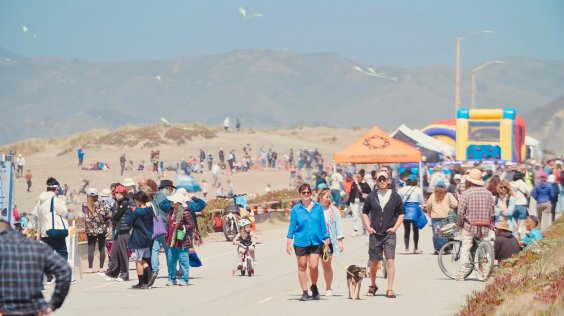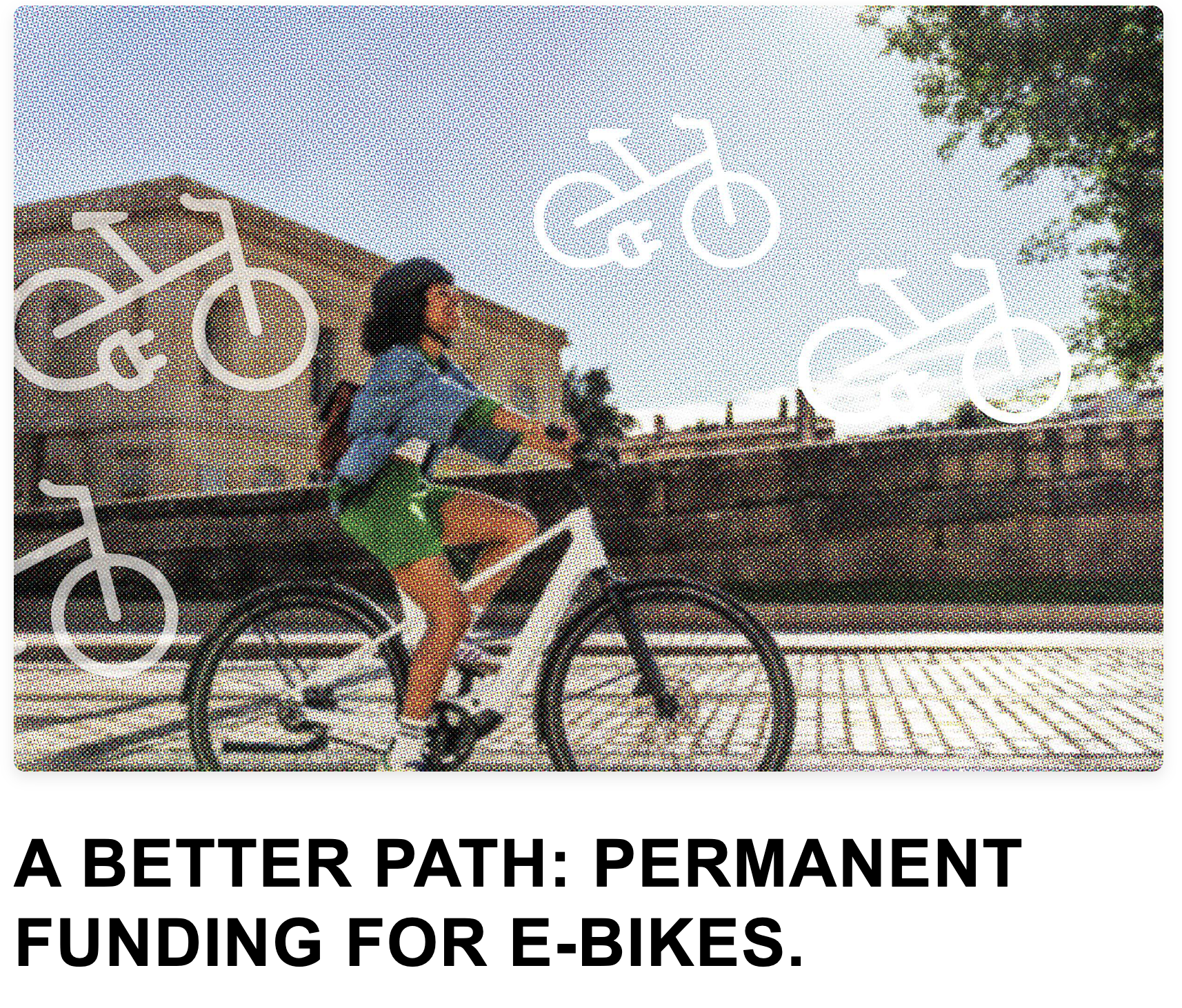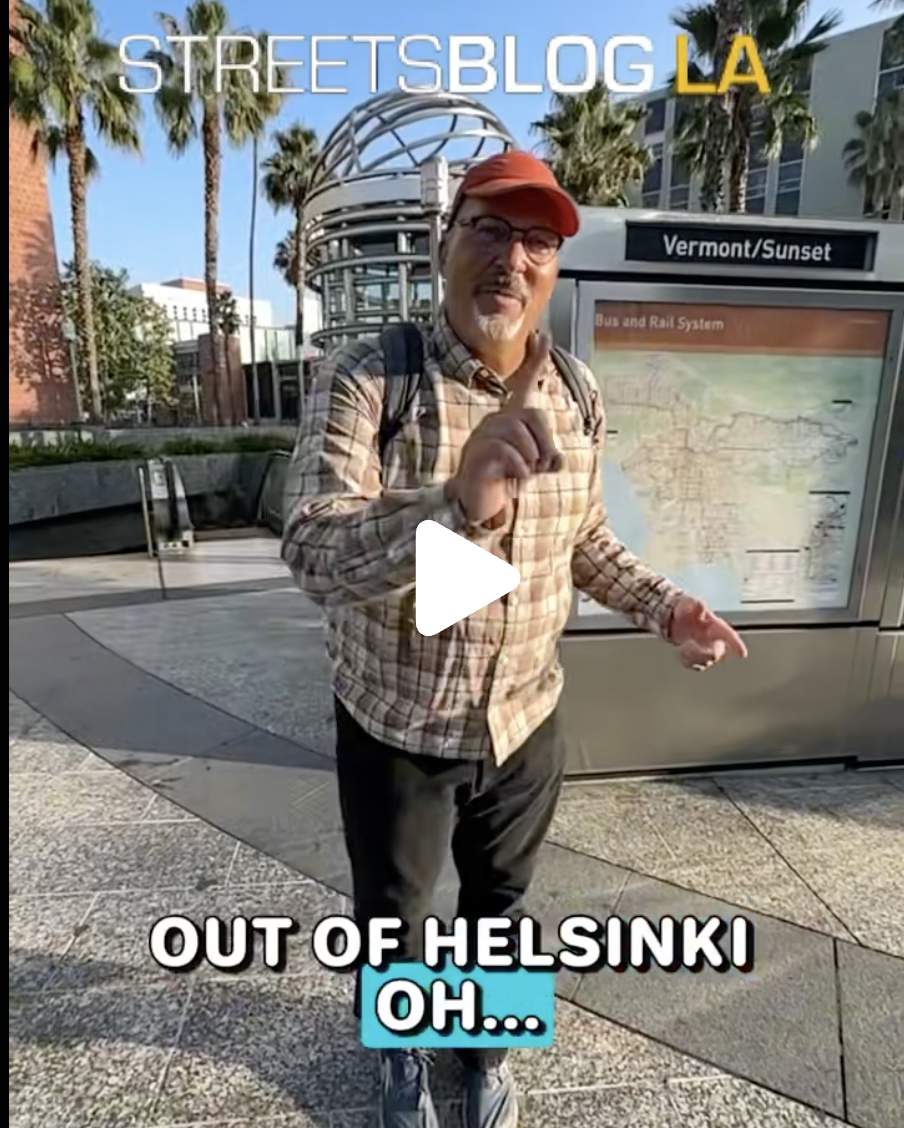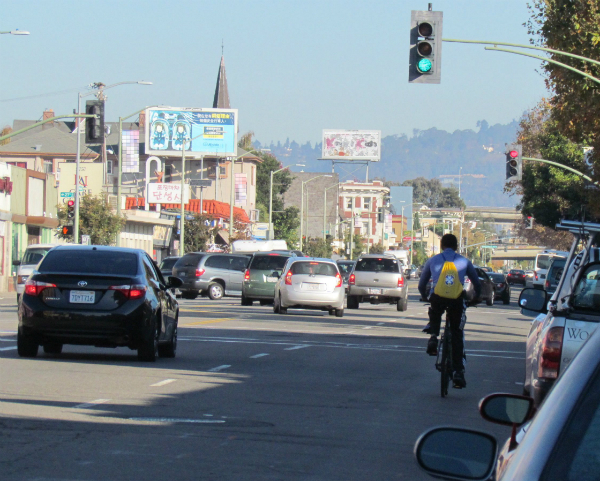
Transportation funding in California has, as SBCA readers must know by now, reached a “crisis.” Shrinking gas tax revenues, combined with an increasing reliance on local sales taxes limited to specific transportation projects, have left our overbuilt and under-maintained highways, roads, and bridges without enough funds to keep them in a basic state of good repair.
Last year the need for a solution was so urgent that Governor Brown called a “special legislative session” on transportation funding, but the process so far has produced little. Some legislators proposed “bold” funding ideas, including raising the gas tax. Increasing the gas tax is long overdue, but meets such knee-jerk opposition that just bringing up the subject counts as a bold action. A lack of focus, and an inability to come to an agreement about how to “fix” what is a royal mess, means that so far no solution is forthcoming.
Meanwhile the yearly state budget process is underway again, with hearings to begin in earnest in the next few weeks. Governor Jerry Brown made his budget proposal in January, and will issue a “May revise” after tax day when state revenues are clearer.
In addition to the state budget, legislators are deciding how to spend the forty percent of last year's Greenhouse Gas Reduction Fund (GGRF) that remained unallocated. This money comes from cap-and-trade and must be used to further reduce greenhouse gases. In this case, having such a large chunk of extra funds has created a sort of paralysis because everyone wants some of it.
While transportation is only part of the budget, it is a big one, and how we invest transportation dollars now will have an impact on the state for many years.
Governor Brown's proposed budget includes a couple of new sources of income for transportation funding, but it is unclear how he will make them happen. In addition to raising gas taxes, Brown proposed a “road improvement charge” that would be added to vehicle registration fees. However, both proposals need approval by two-thirds of the legislature to pass, and Republican members continue to oppose raising taxes or adding fees. The new sources of funds would add $4 billion to Brown's transportation budget—so if they do not pass, transportation spending could be in jeopardy.
Brown also proposes new GGRF allocations for transit (capital expenses, not operations) and for a new “low carbon roads” program. Streetsblog has written about the problems with this proposal—that in part it seems to duplicate the existing Active Transportation Program, and that the rest of it remains worrisomely undefined.
Brown's proposal would include the following new allocations:
From increased taxes and a new “road improvement charge”:
- $3 billion to highways and local roads for maintenance
- $900 million to the State Transportation Improvement Program, which is controlled by Caltrans and the California Transportation Commission and puts most of its funding towards highway expansion
- $200 million to trade corridors, which unfortunately means highway expansion, not rail
From the GGRF:
- $400 million for transit capital projects
- $100 million for “low carbon roads”
Breaking the budget plan down into categories of “highway expansion” (car-planning-per-usual) vs. “active transportation” vs. “transit,” it is clear that it is very much business as usual.
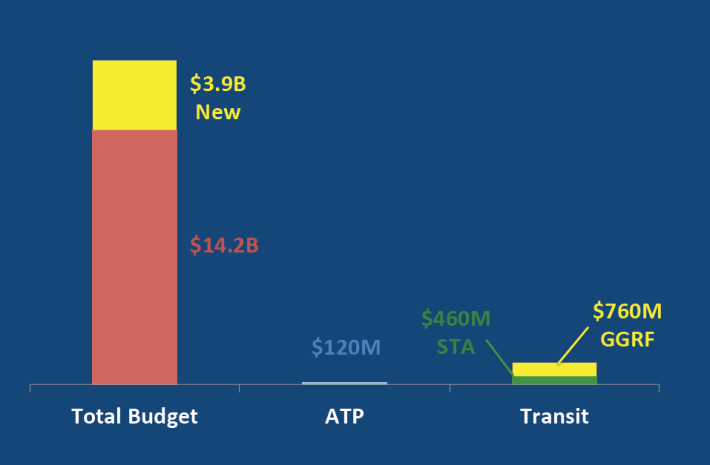
Of the total transportation budget of $18.1 billion, only a tiny slice goes to active transportation. That slice doesn't even match the statewide bicycle commute mode share of 1.1 percent, let alone the share of all trips currently made by bicycle or walking. According to the last California Household Travel Survey, almost 20 percent of all trips are made by walking, biking, and transit—and Caltrans's Strategic Management Plan calls for increasing that to 47 percent by 2020.
If California wants to encourage people to bike and walk and take transit, it will to have to invest a larger percentage of its budget in those travel modes. Years of planning exclusively for cars has put the state way behind where it needs to be.
Meanwhile, the California Transportation Plan 2040, the (currently draft) framework used for planning to meet the state's future transportation needs, includes the following strategies to meet a variety of state goals, including transportation and environmental goals:
- Doubling transit service and transit speed and reducing transfer wait times
- Twenty percent of local bus service to be Bus Rapid Transit
- Fifty percent reduction in future high-speed rail fares
- Five percent increase in carpooling and car-sharing
- Doubling bicycling and walking
If the cost to own and operate private cars keeps increasing, and there are huge increases in vehicle and fuel efficiency, then the state would be able to meet its greenhouse gas reduction goals, according to the plans' projections.
But bicycling and walking are not going to double without more investment in making them safe, viable options for more people.
Advocates working on these issues in Sacramento have been formulating ideas for a counter proposal for the transportation budget. Working as a coalition under Climate Plan, groups including the Natural Resources Defense Council, California Bicycle Coalition, Greenbelt Alliance, Safe Roues to Schools National Partnership, TransForm, PolicyLink, MoveLA, Public Advocates, and a host of others, are proposing that the governor and legislators invest transportation dollars where they will make the biggest difference in meeting public health, climate change, and equity goals.
Among their ideas are to:
- Build Complete Streets on all those new and newly-repaved roads
- Use transportation investments to create better job opportunities
- Reject “low carbon roads” and invest in the existing Active Transportation Program
- Balance transit capital investments with money for operations and transit passes
- Increase the investment in the Active Transportation Program by at least $100 million to bring it more in line with other spending
- Mitigate trade corridor expansion impacts, including environmental and induced traffic effects
Next Monday, April 11, the Climate Plan coalition will present a package of bills in Sacramento—including some SBCA covered here—that move the state closer to achieving these goals. Stay tuned to Streetsblog California for coverage of their reception at their first hearing.
To keep up with state transportation policy, follow us on Twitter @StreetsblogCal.

